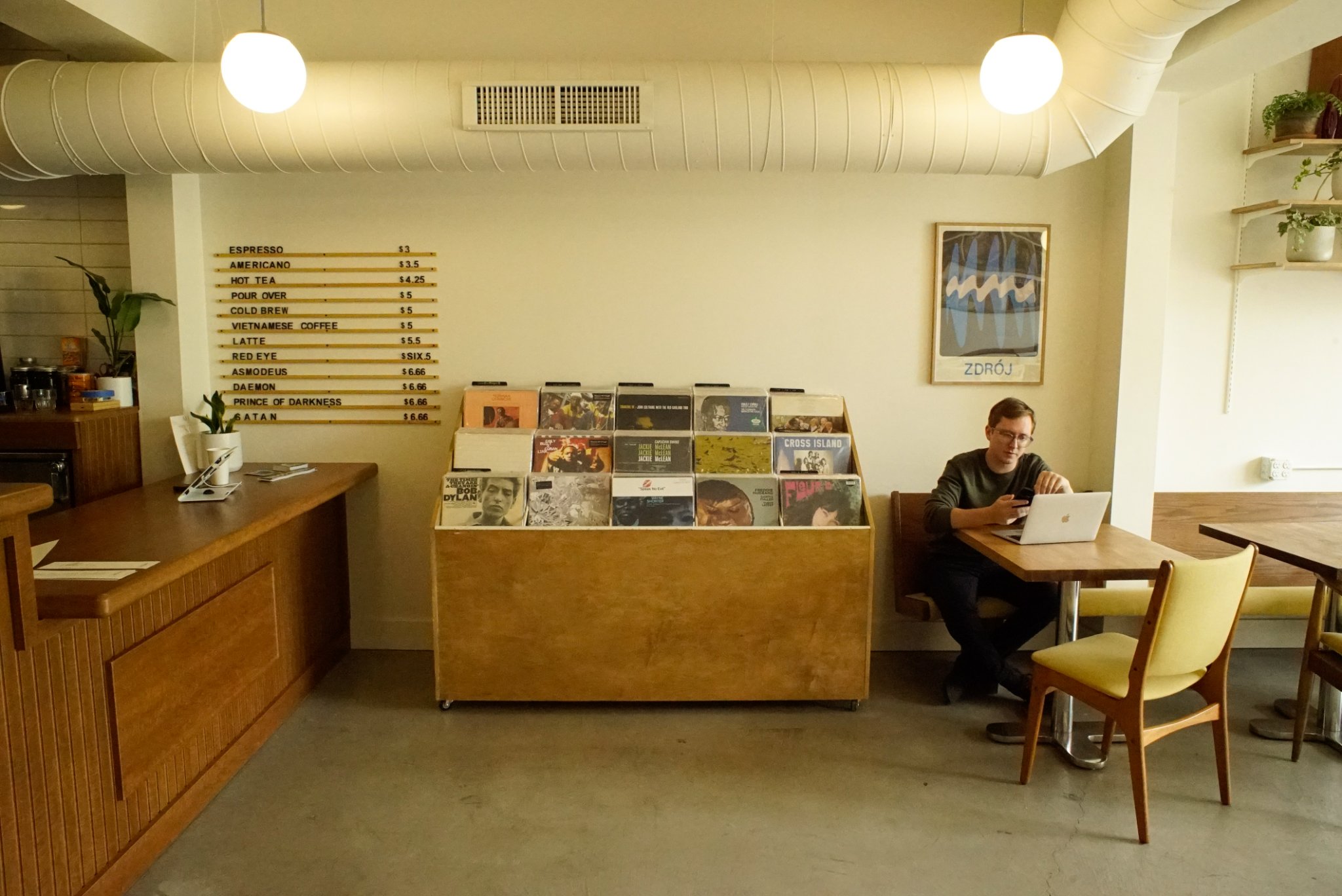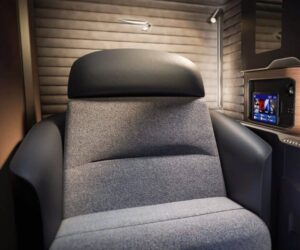Minneapolis-St. Paul’s Best Record Stores
Andrew.Parks
Mon, 11/11/2024 – 21:03
Despite the music industry’s many rough patches, Minneapolis-St. Paul and its surrounding suburbs have sustained an unusually high volume of record stores per capita. From cozy hole-in-the-wall shops to massive, decades-old institutions, here are the stores offering fans space to flip through record bins and speak to actual human beings about the artists they should check out next.
What To Read Next
8 of Minnesota’s Best Children’s Museums
Read More
Bike Trails & Paul Bunyan Beckon in Walker
Read More
Dayne St. Clair’s Favorite Places to Eat in Minnesota
Read More
Get help from the experts to plan your trip
Want to know the best spots in Minnesota? How about tips on how to make the most of your time in a specific city? Our Minnesota experts can answer your questions, offer advice, or plan the perfect Minnesota trip for you. For free.
Theater & Performing Arts
Nightlife & Music
Article
MINNEAPOLIS

Disco Death Records
Disco Death Records
Come for the latte art and evocatively named coffees, stay for the immaculately curated selection of vinyl around the edges of this elegantly designed new shop. Tucked just off Lyndale and 26th St. in Uptown —not far from the other new kid on the block, Lucky Cat Records — Disco Death was opened by former Dead Media proprietor Joel Eckerson and is presented like a love letter to the analog format. The limited selection of vinyl includes a wide array of genres, from blues and country to global, experimental, noise, and electronic music.

The signed vinyl section at Electric Fetus
Electric Fetus
Against all odds, Electric Fetus has survived multiple recessions, a tornado, a flood, and the death and rebirth of vinyl to become Minnesota’s longest-running record store and a firmly established institution in the Minnesota music community. This destination store offers a vast inventory of new and used LPs, 45s, CDs, and DVDs, plus an eclectic gift shop that stocks everything from baby onesies to Prince memorabilia to glass pipes.
The sprawling store, housed in an old hardware store, is the perfect place to while away an afternoon shopping or take in an in-store performance by a touring band. And the smell of incense is still just as strong as it was when the shop first opened its doors (in a different location) in 1968.

Credit: Extreme Noise Records
Extreme Noise Records
The sign hanging above the front door says it all: “punk rock.” Since 1994, Extreme Noise has operated as a co-operative, volunteer-run store with deep roots in the DIY punk and hardcore community. The store first opened 30 years ago on April Fool’s Day, 1994, and settled into its current home on Lake Street and Grand Avenue in the Lyn-Lake area of South Minneapolis, where it has become a neighborhood fixture.
The store sells a mixture of new and used vinyl records in the punk, post-punk, death metal, hardcore, and alternative rock genres, from household names like Rancid and the Ramones to obscure underground acts and local mainstays like Dillinger Four.

Credit: HiFi Hair and Records
HiFi Hair and Records
This intimate record store, which is nestled next to owner Jon Clifford’s leopard print-lined rock and roll hair salon, is so devoted to cataloging the Twin Cities historic music scene that it almost feels like a museum — at least, the kind of museum that’s ok with blasting old Run Westy Run and Babes in Toyland albums at top volume while people look around. Situated across from the Basilica of Saint Mary church on Loring Park, Clifford’s love of local lore and glam combine to create a singular experience that feels like worshiping at the altar of Minnesota music.

Credit: Hymie’s Records
Hymie’s Records
It’s hard to imagine that there was ever a time when Hymie’s didn’t exist. The East Lake Street shop has the vibey, settled-in feel of an old-school record store—the kind with handmade filing cards in the sorting bins, shelves of vinyl climbing up every wall, and an old diner booth situated at the center of the store for impromptu conversations between the stacks. The store has been through a few different owners since founder Jim “Hymie” Peterson first opened it in 1988, but each proprietor has remained loyal to its relationship with the surrounding Longfellow neighborhood and the larger music community. A small stage in the back of the store offers a place for up-and-coming bands to perform, and their local section is just as well-stocked as its classic country and jazz bins.

Credit: Know Name Records
Know Name Records
Situated just off the 35W and Crosstown interchange in south Minneapolis, Know Name Records has been a neighborhood hub for records, smoking supplies, and a massive inventory of incense since 1977. It has also become a destination for KISS fans, thanks to its annual “Music from ‘The Elder’” celebration that pulls out all the stops with live music and KISS-themed door prizes.

Lucky Cat Records
Lucky Cat Records
This new women-owned and operated record store sits on hallowed ground. It was once the site of Oar Folkjokeopus, an influential spot where punk rock luminaries from the ‘80s scene shopped for new arrivals and new bandmates, and later became Treehouse Records.
After sitting vacant for several years, Lucky Cat proprietor Michele Swanson has breathed new life into the space while also honoring its roots; in addition to a robust stock of local LPs, pop music books, and cat-themed merch, the walls are also lined with posters and artifacts from historic local bands.

Roadrunner Records
/ Credit: Paul Vincent
Roadrunner Records
It’s hard to miss the unmistakable sight of Roadrunner’s Kraft mac and cheese-colored exterior while driving down Nicollet Avenue in south Minneapolis. The community mainstay spent over 30 years at its location on 43rd and Nicollet before moving two blocks south during the pandemic.
Now in its own building, Roadrunner has re-emerged as a neighborhood destination specializing in what they describe on their website as “black plastic with a hole in the middle” — vinyl records from the 1960s-present in the genres of rock and roll, country, and jazz.

The Record Spot owner Dave Fowley
/ Credit: Atomic Energy Commission
The Record Spot
Located across the street from Victor’s 1959 Cafe at the bustling intersection of Grand Avenue and 38th Street in South Minneapolis, The Record Spot calls itself “the smallest record store in Minneapolis.” The postage stamp-sized space also just might be one of the best curated shops in the entire metro area.
Longtime rock guitarist and record show regular Dave Foley oversees this tiny space, and loves to regale shoppers with his encyclopedic knowledge and stories about the local scene as they pick through his carefully collected wares.
ST. PAUL

Record Store Day at Agharta Records
Agharta Records
The name alone — a nod to the title of a 1975 Miles Davis album from his divisive jazz fusion period — speaks volumes about Agharta’s commitment to stocking a deep catalog of collectible vinyl in every genre. Located just a stone’s throw from Barely Brothers Records in St. Anthony Park, Agharta advertises themselves as a store “for people who love vinyl,” which they stock exclusively. In addition to used LPs across a variety of genres, Agharta also carries all the latest new releases in hip-hop, rock, pop, jazz, and more.

Credit: Barely Brothers Records
Barely Brothers Records
You know you’re in a vinyl-obsessed space when a store has an entire library card catalog-style wall filled with collectible 45s. Located in the St. Anthony Park neighborhood — which has boomed with the addition of several new breweries, food halls and boutique shops in recent years — Barely Brothers Records are so devoted to vinyl it’s the only thing they carry. Co-owner Michael Elias has worked in local record stores for over 40 years, and his love of music has culminated in both a physical space and a volunteer-run, 24/7 streaming radio station, Barely Brothers Radio.

Caydence Records and Coffee
/ Credit: Visit Saint Paul
Caydence Records & Coffee
With vibrant graffiti on the side of its building declaring “EAST SIDE PRIDE,” this community hub on St. Paul’s East Side maintains a live performance space with a robust live music calendar along with a retail store and cafe. The storefront offers used and new vinyl, CDs and cassettes, with a sizable representation of music from local artists and arts and crafts consigned directly from the community, while a menu of house-made breakfast and lunch offerings provide visitors with sustenance beyond the typical coffee shop fare.

Credit: Urban Lights
Urban Lights
Minnesota’s only Black-owned record store — and one of only 32 Black-owned stores in the entire country — is still going strong after more than 30 years on University Avenue in St. Paul’s bustling Midway neighborhood. Even before opening as Urban Lights in 1993 the location was home to Northern Lights, a historic record store best known as the meeting place for members of Hüsker Dü in the late 1970s.
For the past three decades, the shop that Racket calls a “Boom-Bap wonderland” has been lovingly guided by community pillar and hip-hop head Tim Wilson, and the vibrant tapestry of posters that line every inch of his store speaks to Wilson’s love of all genres of music, from classic soul and funk to hip-hop, R&B, pop, and jazz.
GREATER METRO

The St. Paul location of Cheapo Records
Cheapo Records
Various Locations
Operating in three different locations, Cheapo Records calls their chain “the last authentic music stores.” While many smaller shops have converted valuable floor space to rows of vinyl and gifts, Cheapo has remained steadfast in its commitment to stocking vast quantities of not just LPs but new and used CDs across all genres in addition to cassette tapes, DVDs, and Blu-rays. The warehouse-like stores have seemingly endless rows of physical media to get lost in, and the whole experience is set to that nostalgic sound of shoppers flicking through plastic jewel cases in search of treasures.

Down in the Valley
Down in the Valley
Golden Valley
For more than 50 years, the west metro has relied on Down in the Valley as a destination spot for records, CDs, smoke shop supplies, and rock memorabilia. The popularity of the first store helped it to grow into a small chain, and the store’s late founder Steve Hyland navigated the many ups and downs of the music business, even selling waterbeds in the ‘80s as vinyl sales started to decline.
Now that vinyl sales have boomed again, Down in the Valley stocks a wide variety of new and used LPs along with exclusives for Black Friday and Record Store Day. The original Down in the Valley, opened in 1972, is still going strong in the same area where it all began off Olson Memorial Highway in Golden Valley, with a second store operating in Maple Grove.

Credit: Fly Vintage & Vinyl
Fly Vintage & Vinyl
Robbinsdale
It’s a tricky thing, combining vinyl sales with other merchandise. Oftentimes, antique stores get a bad rap for stocking overpriced, commonly available LPs, while thrift stores might accidentally drop a priceless album into a pile of old polka 78s like a needle in a haystack.
Fly Vintage & Vinyl take a more refined approach, offering mid century furniture and tasteful vintage decor along with a room full of carefully chosen records, with a focus on ‘80s and ’90s new wave, alternative, indie and punk, classic rock from the ‘60s through ‘80s, and Twin Cities artists.

Mill City Sound
Mill City Sound
Hopkins
When it comes to sheer volume of inventory and selection of desirable titles, it’s hard to beat the well-stocked Mill City Sound in downtown Hopkins. Only a decade into its existence, the store has already expanded to multiple floors and has purchased several massive, headline-grabbing private collections to stock its aisles of LPs, 45s, and CDs. Mill City also sells turntables and offers the increasingly rare service of turntable repair, helping collectors keep all those records in rotation.

Credit: SolSta Records
SolSta Records
St. Louis Park
Sitting just to the west of Highway 100 and Excelsior Boulevard in St. Louis Park, SolSta Records is a tastefully designed haven for used and new vinyl in the west metro. Both the name and location of the store have evolved over the past decade; originally opened as Solid State Vinyl in south Minneapolis in 2016 by husband and wife team Hannah and Phil Borreson, the shop morphed into SolSta and migrated westward. SolSta stocks new and used vinyl, used CDs and cassettes, and new and used turntables, and also offers turntable repair.

White Bear Lake Records
White Bear Lake Records
White Bear Lake
If The Record Spot calls themselves the smallest record store in Minneapolis, then White Bear Lake Records should certainly earn the title of the smallest record store in the northeastern suburbs. Tucked into a back alley in downtown White Bear’s bustling retail district, this shop is owned by Chris Valenti with support from other record show regulars like Tom Novak and Drew Miller. Though the store is only the size of a suburban living room, every nook and cranny is crammed with a savvy collection of classic rock, jazz, blues, and Minnesota legends like the Replacements and Prince.
Learn more about the metro area’s music scene.

Roadrunner Records
/ Credit: Paul Vincent








